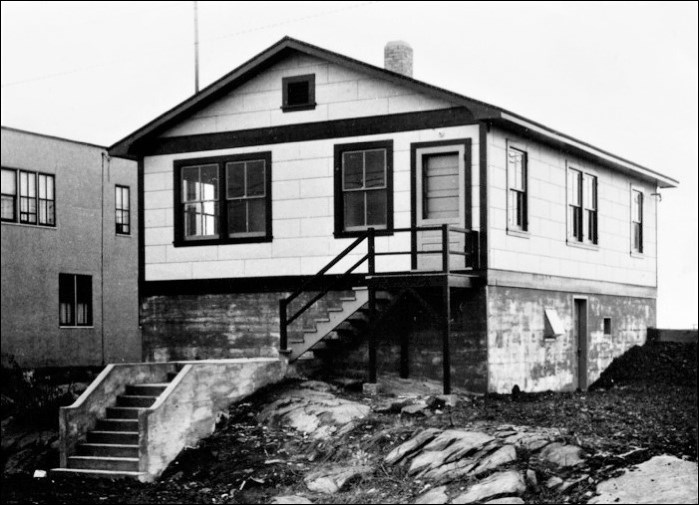Flin Flon experienced a major communications revolution in the early 1950s when new telephone technology came to town.
The “buzz” was the arrival of an automatic dial telephone system! I can hear the younger generation asking, ‘‘what’s a dial telephone?” Fair enough, considering the many changes in the way we communicate by telephone.
Let’s flashback to the pre-dial era when not all Flin Flon residents had a telephone in their home. For many, it was considered to be an unnecessary expense. Most communication was done on a one-to-one basis and, if you needed to make a local call, you could always drop over to a neighbour who had a telephone. The modern automatic dial system was located in the newly constructed Manitoba Telecom Services (MTS) building at the bottom of the Third Avenue hill. The new system eliminated the manual switchboard that was located in the MTS building on Church Street between the Flin Flon clinic and the HBM&S staffhouse. You have probably seen this type of switchboard in the old movies – or in a museum. The operators (always female), wearing microphone headsets, would see a line light up and say “Number, please.” You would give the number and the operator would connect your call. The new dial system employed four digit numbers. Most homes had only one phone. Hey, kids! There was no message manager or call waiting/forwarding. You dialled the four digits and if no one answered, you hung up. How delightfully simple!
Making an early days long distance call required some time and effort as the call from Flin Flon had to be routed through a variety of switchboards ‘along down the line’. The operator would stay on the line to ensure that you were connected to your ‘party’. If there was no answer the operator would chime in with, “Sorry, your party does not answer. Would you like me to try this call later?”. The telephone operators, particularly in small communities, were more than functionaries as they were in a position to offer a level of personal service – far and above what we experience today from the impersonal computer generated voices. “Your call is important to us…please stay on the line for eight more years and a customer services representative… zzzzzzz.”
Sorry. I digressed. Back to the story.
Not having a phone in the early days wasn’t that much of an encumbrance unless it was necessary to either receive or make a call to someone located “down south” who also did not have a phone. In that situation a telegram would be sent indicating that a call would be made on such and such a day and time. The Flin Flon telegraph office was located in the CNR train station uptown (now the Barrow Provincial Building, commonly called “Red Square”) A sample message: “Need to talk Saturday, 5 p.m. Advise number to call orif not okay.” The telegrapher in Flin Flon would “key” the message in Morse code. The message would eventually make its way to the appropriate telegraph or railway station agent who would have the telegram delivered to the intended recipient. (Receiving a telegram or a long distance call in those days was a significant event.)
To make a long distance call, you could use your neighbour’s phone or trudge up to the MTS building on Church Street. There was a special phone on hand and the operator would place the call in your presence. Meanwhile, at the other end, the person receiving the call would have arranged to use the phone of a friend or neighbour and would be on hand awaiting your call. The long distance charges would be tallied by the Flin Flon operator. Hang up and pay up! Seems like a lot of work in this day and age of instant communication, doesn’t it? But, that’s the way it worked.
Now, thanks to the ubiquitous internet you are free to search “telegram and dial phone” to better understand what I have valiantly tried to explain! A note: Even in this age of cell phones that do everything but spit nickels, we still use terms such as: pick up the phone (answer) and hang up the phone (referring to the early wall phones).
Here’s a post-note. Back in the day, kids without phones simply walked down the street to their friend’s house, knocked on the door and asked, ‘Can you come out and play?’This was called ‘calling on someone’. Got any comments or reflections on this column? Contact Vincent at vincent. [email protected].




